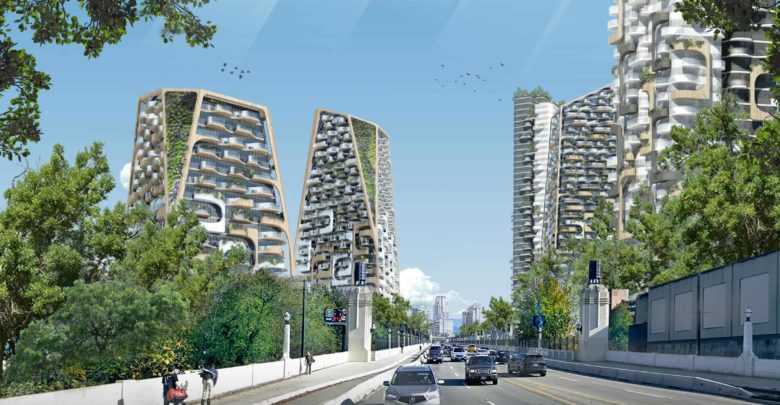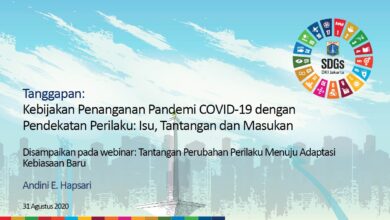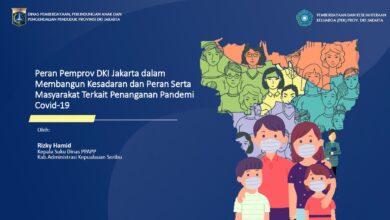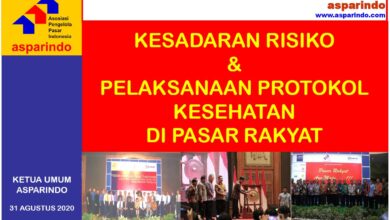
The Senakw development aims to ease the city’s chronic housing crisis – and to challenge the mindset that indigeneity and urbanity are incompatible.
The scrubby, vacant patch beneath the Burrard Street Bridge in Vancouver looks at first glance like a typical example of the type of derelict nook common to all cities: 11.7 acres of former railway lands, over which tens of thousands of people drive every day.
This is not any old swath of underused space, however. It’s one of Canada’s smallest First Nations reserves, where dozens of Squamish families once lived. The village was destroyed by provincial authorities more than a century ago.
Now it may rise again – but in radically different form. In an internal referendum on Tuesday, 87% of voting Squamish Nation members approved the construction here of what may become the most dramatic statement of urban Indigenous presence in any Canadian city – a new district called Senakw, after the long-displaced village, with 11 towers, 6,000 dwelling units and more than 10,000 residents.
“We want to bring our people back home to that part of our territory,” says Khelsilem, a Squamish Nation councillor. “People who support new housing are often marginalized out of decision-making, and this is a marginalized community saying, ‘This is how we’re creating value for our nation, and the public at large.”
This is a marginalized community saying, ‘This is how we’re creating value for our nation, and the public at large’

Few First Nations reserves in Canada are found so centrally in urban areas, and this unique location has given the Squamish Nation a chance to explode local city-building norms. Construction begins in 2021, and at more than 500 units per acre, Senakw’s density will reach Hong Kong levels – a fact that is only allowed because Senakw exists not on city land, but on reserve land, which is technically federal.
Another striking feature is that only 10% of apartments will include parking, unlike the city’s rules that mandate one parking space per unit. The buildings will also forgo the podium-and-tower design that’s become a hallmark of “Vancouverism” in favour of slender high-rises maximising public space. The buildings could be up to 56 storeys tall, towering above the low-rise neighbourhoods nearby.
There is this opposition assumed between the civilization cities are imagined to represent, and the imagined savageness of Indigenous people
Senakw would be a sharp rebuke to the mindset in Canada that indigeneity and urbanity are incompatible, says Jordan Stanger-Ross, an associate professor of history at British Columbia’s University of Victoria. “In the early history of Vancouver, and colonial cities generally, there is this opposition assumed between the civilization cities are imagined to represent, and the imagined savageness of Indigenous people,” he says. “There is an idea that the two can’t co-exist.”
Senakw would be a sharp rebuke to the mindset in Canada that indigeneity and urbanity are incompatible, says Jordan Stanger-Ross, an associate professor of history at British Columbia’s University of Victoria. “In the early history of Vancouver, and colonial cities generally, there is this opposition assumed between the civilization cities are imagined to represent, and the imagined savageness of Indigenous people,” he says. “There is an idea that the two can’t co-exist.”

That idea persists, says Ginger Gosnell-Myers, who served from 2013 to 2018 as Vancouver’s first Indigenous Relations Manager. “If you look at where reserves have been placed in this country, they’re largely on the outskirts,” she says. “That’s by design … we’re looking at a deliberate history of exclusion.”
Though the original village here was ostensibly a protected reserve, government and industrial interests chipped away at it. In 1913, the provincial government coerced the remaining Squamish residents into selling their land, placed them on barges bound for the north, and razed the village. For a time the area became a squatter’s camp, and was surrendered altogether by the Squamish nation in 1947.
The Canadian Pacific Railway set up a rail terminus here, but when the railway tried to sell the land in 1989, the Squamish said it should revert to reserve status. In 2002, after a long legal battle, they regained a fraction of the land and have been exploring how to use it ever since. “The Squamish Nation kept pushing to explore the near-maximum the site could handle,” said Khelsilem on Twitter last month. “This is our jewel of developable land and we’re only going to get once chance in the next 100 years to develop it.”
Even by the standards of architectural rendering, early images of appear optimistic: towers inscribed with Indigenous art, girdled in greenery and rising into blue skies punctuated by flocks of birds. The design proposal was created by Revery Architecture in conjunction with the Squamish Nation, and gave particular attention to the history of the site and its relationship to the natural environment. The idea was to give people crossing the Burrard Street Bridge the feeling of entering a forest as much as a city.
If Senakw could be the most dramatic example of the Indigenization of Canadian cities, it’s not the only one. Indigenous communities have long been involved as urban property developers. The Squamish Nation itself is one-third of the MST Property Development Corporation, comprising three Vancouver-area First Nations which have embarked on smaller projects, the goal being the return of profits to the nation’s members for social and community development.

Neither is it unique to Canada. In New Zealand, a number of treaty settlements since the 1990s have put urban land in the hands of tribal development groups, and Māori design principles have gradually become more common in both public and private building – particularly in the rebuilding of Christchurch’s city centre following the 2011 earthquake.
Not all of the Squamish Nation has praised the project. Some members have raised concerns about the 50-50 profit sharing partnership with Westbank, a private developer better known as a builder of luxury condos.
There has also been some pushback from the broader Vancouver community. One city councillor called the height “inconsistent with the values of a liveable city”.

Khelsilem argues that most reaction so far has been positive, in part thanks to Vancouver’s housing crisis . Barely more than 1,000 purpose-built rental apartments were approved last year, and the city saw a net gain of only 2,300 rental units between 2010 and 2018, despite adding nearly 40,000 people. Senakw, however, will have plenty of rental properties – 70-90% of the 6,000 total units – with provisions for affordable housing for Squamish.
“There is extreme demand for rental housing to be built in this city,” says Gosnell-Myers, “and you have a proposal that will meet a lot of that demand. Now it’s the city’s responsibility to act.”
Gosnell-Myers says the city must now work with the Squamish Nation to supply amenities for a community of more than 10,000 people: schools, transit connections and other infrastructure. So far, she says, the city has lagged on planning for how quickly the project may come together.
“I told the city years ago this was going to happen,” she says. “Part of the problem is that the city doesn’t quite understand the power and potential of these lands, and how fast things can happen.” The Squamish Nation, she says, has “waited more than a century for this. They’re not going to wait any longer.”
Artikel ini telah tayang di theguardian.com dengan judul “The bold new plan for an Indigenous-led development in Vancouver”, https://www.theguardian.com/cities/2020/jan/03/the-bold-new-plan-for-an-indigenous-led-development-in-vancouver
Penulis : The Guardian
Foto Cover: A rendering of how the new First Nations district Senakw could look from the Burrard Street Bridge. Photograph: Revery Architecture



